‘Signage business can scale up considerably in India’
By N Jayalakshmi | June 07, 2022
As businesses start to get back their momentum post pandemic,where does the signage industry as a whole stand? Venkatesh R G, Managing Director, Diamond Display Solution Pvt Ltd, a leading and pioneering player in this space, shares his views on the challenges and opportunities for the signage industry as whole in an exclusive interaction with Retail4Growth.
Do you observe any new trends as far as signage design itself is concerned? For example, with the rise of media like airport or the Metro, there is bound to be greater thrust on the aesthetics of the signage right?
Yes absolutely! But then, if you look at an airport space, like say the Bangalore airport, although many of the signage cabinets inside the airport premises look different from the regular signage structures you see, they are essentially the same as they were about 20 years ago. I don’t see much change there. Even globally, the basic engineering of the sign structure has remained the same over the years. In fact, India is not far behind when it comes to signage structure itself. The only difference is that signage structures in international markets are well regulated by the government, so they can withstand natural disasters like cyclones. But that is not necessarily the case here in India.
 What about new market trends in terms of usage and materials?
What about new market trends in terms of usage and materials?
Some of the biggest changes in the signage space over the years include the shift from hand painting to proper graphics in the early 90s and later the adoption of Flex with Vinyl letters. The next big shift happened around 2006 when rigid ACP (Aluminium Composite Panel) came into signage in a very big way and this has remained so in the last 15 years. There has been no major change since then. Today most brands globally prefer rigid ACP or just Aluminium, Stainless Steel, Mild Steel or Powder Coated Steel signage with dimensional letters. Of course Flex signage does play a big role in terms of its cost, but there is greater inclination on the part of many big brands today to use biodegradable materials like fabrics, as against Flex, which cannot be recyclable. In fact, most of the brands we work with don’t use flex , and our consumption of it in our entire business is less than even 5%.
As for other market trends, apart from some brands wanting to use digital signage or video walls, there isn’t much that is new. Here again, most big luxury or legacy brands would prefer to use static signage because a moving or digital media can dilute their brand visibility .
What have been your focus areas in terms of market segments? Also, moving forward what new business opportunities do you see emerging for the signage industry as a whole?
We have primarily focused on infrastructure projects, including airports, Metros and malls. In terms of new opportunities, the main focus, as far as we are concerned, is to expand the customer base within a segment. In India, almost every segment uses signage, so the business opportunities for a signage company are more in terms of scale, rather than tapping a new segment. For example, if we are catering to a certain number of airports today, it could be double that number in future. The opportunities do exist for all, it’s just a matter of choice as to what kind of customer base and scale one is looking at and the capability to service that.
 How did the recent price hike of raw materials affect business ?
How did the recent price hike of raw materials affect business ?
It it affected the business very badly. Prices of materials like steel have doubled and so have of LED and Acrylic, so yes we did lose some businesses.
Do you think the existence of an industry body would have helped voice the concerns regarding the rice hike and other challenges that the industry is facing today?
Well, the fact is that the percentage of steel used by the signage industry is so small compared to, say an industry like construction, that it wouldn’t have made any difference. When the construction industry itself did not voice the concerns, we didn’t stand much of a chance.
But yes, we did try forming an association many years ago, but it didn’t work mainly because the entry barrier to this business is too low. Irrespective of any industry body or association, there will always be small players who will do anything to bag an order. So it doesn't really matter. And the fact is, except in the case of huge infrastructure projects which need large scale manufacturing capability like ours, most signage companies can survive with a small set up and cater to small projects; and it works. It’s just the nature of the business and you really have no control.
But yes, when we conceived of the idea of an association, the aim was to have an industry representative to engage with local regulators, but the plan hasn’t moved forward since most of us are just caught in our everyday affairs.
What in your view are the most critical challenges that this industry is facing today?
Pricing is the biggest challenge; it is not technology - today there is better machinery available and I don't see a huge challenge in manufacturing. But the prices are so pathetic that it's very difficult to sustain for a long time.
What are your plans for the immediate future?
To improve customer service and do better than what we did last year - that's all I can say at this point of time. The only way forward is being loyal to the customer. If I give the right quality product at the right time, then the chances of them going somewhere are less.
Finally, what do you think is the most important factor for success in this industry?
I would certainly say that 100% involvement 24x7 is a must for success in this industry. Sign industry is and will always continue to be 100% owner or family driven. I can vouch for it based on my own personal experience. Today our entire family is involved in the business and I’d say it is true of signage companies anywhere in the world. I know many big companies in the UK and US, who are really big and they all completely owner driven - running the show from morning to evening. Again, it all boils down to the nature of this business.


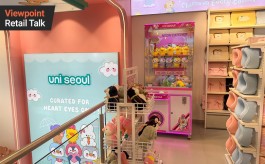
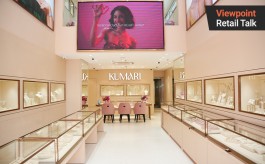
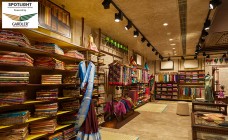
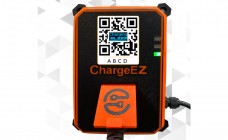
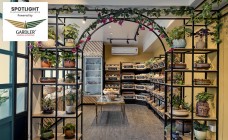


Comments